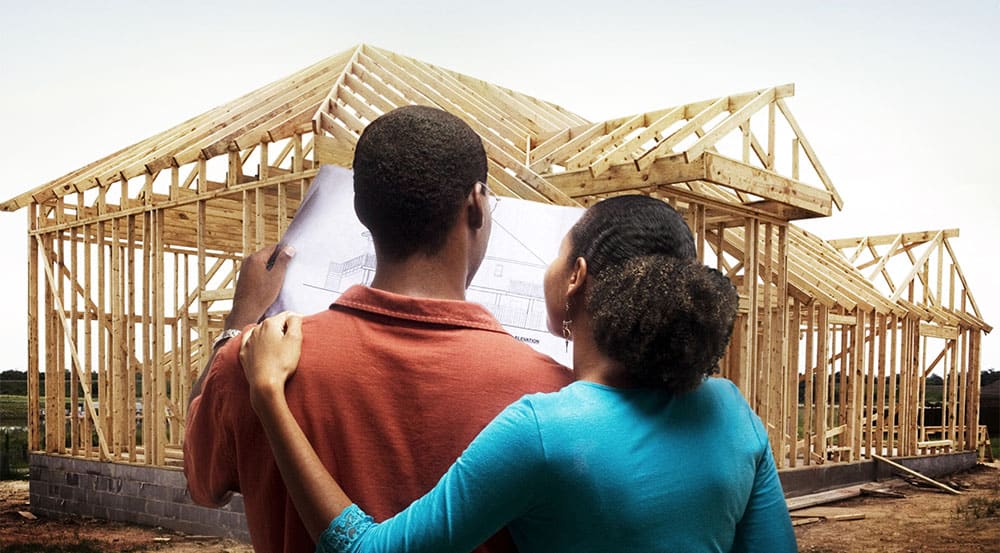Whether it’s your first home, you’re upgrading or it’s time to downsize and simplify, one question is always part of the mix. Should you build new, or buy an established property?
Both options have their pros and cons, and many people will simply choose the one they’re more familiar with. But with both state and federal governments announcing construction grants for new builds, is the balance tipping?
Here’s what you should bear in mind when making this all-important decision.
Time
If you’re hoping to move house in the next couple of months, you’ll want to buy an established home. A new build can take a considerable amount of time — often more than people realise. While some developers offer build-time guarantees, there are steps that are out of their control, like council approvals or severe weather events.
The actual construction for a new build house takes between four and 12 months depending on its size, complexity and slope of the land. However, it’s wise to add a few more months to your time budget to allow for unexpected delays.
Established homes offer you the opportunity to move in faster. However, if you’re time poor, take into account the time you’ll spend finding the right place. Organising a new build takes a lot less time upfront, because blocks of land are less competitive to buy. Contrast that with the weekends spent at open inspections and putting in offers that might be rejected, and building can start to look like the more efficient option.
Cost
Unless you’ve just won Powerball, your house budget is going to be your primary consideration. But is building cheaper than buying? Let’s take a look at the breakdown by using two cities as our examples. We have skipped stamp duty in our cost analysis for simplicity.
The median price for a block of land in Sydney is $450,000. In Adelaide, it’s $220,000.
Construction costs are slightly cheaper in Sydney thanks to economies of scale. Finder estimates that a standard-quality three bedroom brick veneer house, built on a level block with no extra customisation, will cost you around $180,000. In Adelaide, it’s closer to $200,000. Add onto that another 20% for finishing costs.
To make it cheaper, the federal government has offered a $25,000 HomeBuilder grant to owner-occupiers building a new home over $150,000. Some states have followed suit, although neither SA nor NSW have done so at this stage.
Total for Sydney (with HomeBuilder grant): $740,000
Total for Adelaide (with HomeBuilder grant): $439,000
If you are a first home owner, you may also be eligible for a First Home Owners Grant, which is only available for new builds. This is worth $10,000 in NSW and $15,000 in SA.
What’s the median house price for an established home in each city? We can’t narrow these data down to a three-bedroom brick veneer for an exact price comparison, but the overall median house price is as follows:
Sydney: $1,150,357
Adelaide: $533,525
On these figures, it seems clear that building new is substantially cheaper than buying an established home. However, remember that the building costs will go up if you want a higher quality home, are building on a steep block or one with strict bushfire regulations, or choose an architect-designed dwelling. If you’re particular about what you want, an established home might end up comparable in price.
Style
It’s not enough to afford your new home: you want to feel proud of it as well. Whether a new build or established home makes your heart swell more depends on your unique tastes and preferences.
New builds offer you the chance to completely customise your home. You can choose what cladding to use, where the kitchen should go and whether the flooring should be bamboo or tile. You can also take the opportunity to design a floor plan that works for your family now and into the future, making this a great option for a ‘forever home’. Being intimately involved in the process can be intensely rewarding, and many people choose a new build for this very reason.
For others, the character and history of an established home win out over a new build every time. If you’re an aficionado of art deco, mad about mid-century modern or charmed by a nineteenth-century cottage, you’ll already know that you can’t replicate history. Older homes often employ building materials, like stone and some timbers, that are no longer available or have risen so much in price that they’re now luxury items.
Bear in mind that you’re buying the outdoor land as well as the building, so think about the overall grounds. For a new build, you’ll usually be buying a completely cleared block of land with nothing on it.
As any gardener knows, it’s easier to change an established garden than start one from scratch. Trees and shrubs can take years to establish, so if a shady green space is important, an established house is likely the way to go.
Location and land size
Land releases and new subdivisions tend to happen in outer suburbs, so if you want an inner-city home you might need to look for an established house. Even if you’re happier on the outskirts, there are more established homes than there are vacant blocks, so you’ll have a wider choice of locations.
Be aware, too, that new developments in areas which are newly residential may lack infrastructure. Schools and public transport could be thinner on the ground, and you may find yourself driving further than you like to shops and amenities.
Additionally, if you want a larger block of land you’ll generally have more luck with an established build. New blocks have been trending smaller over the past few decades, and house-and-land packages will be designed for those small pieces of land.
New or old, large or small, what’s important is that your home fits you. Happy hunting!
